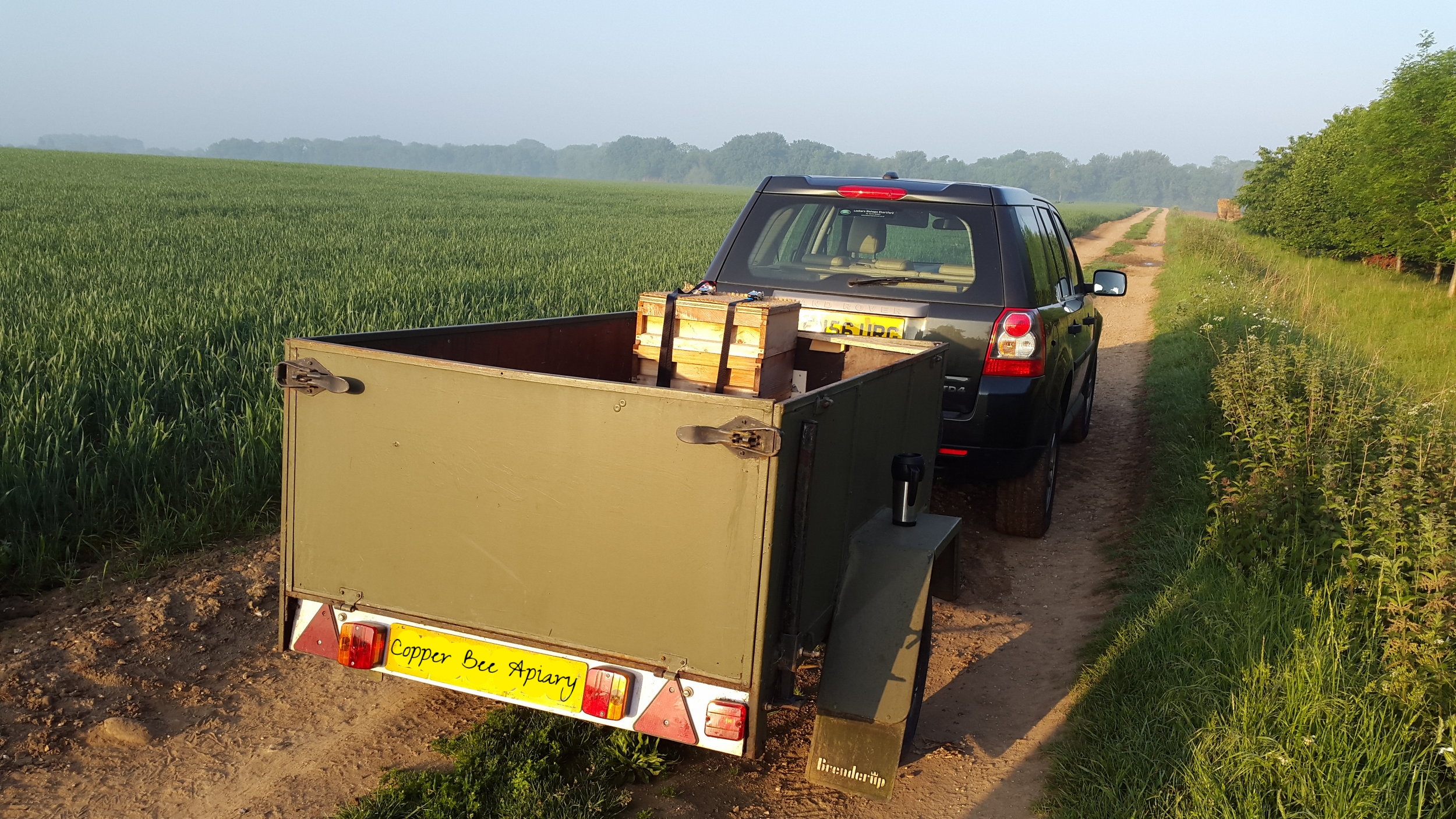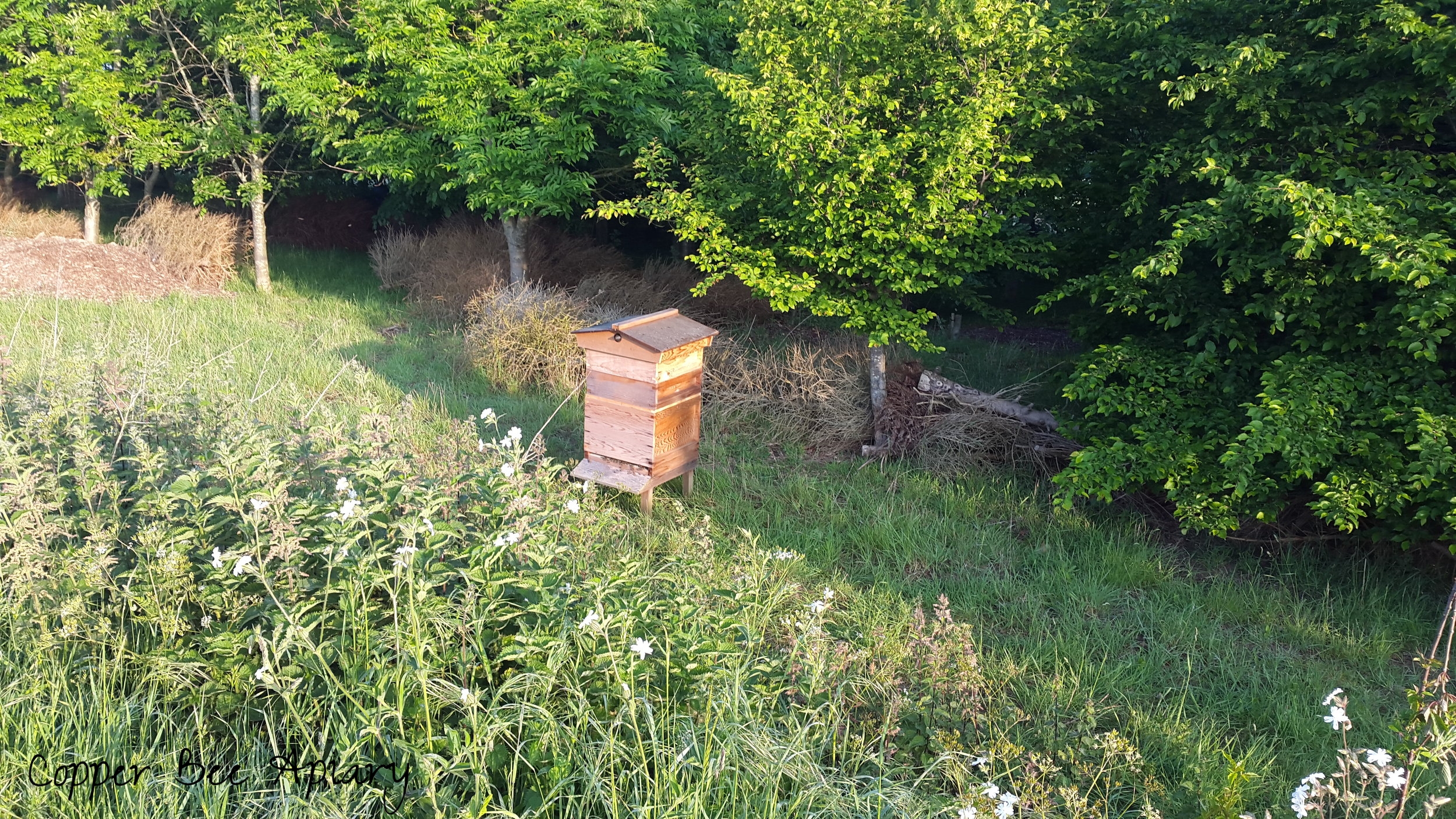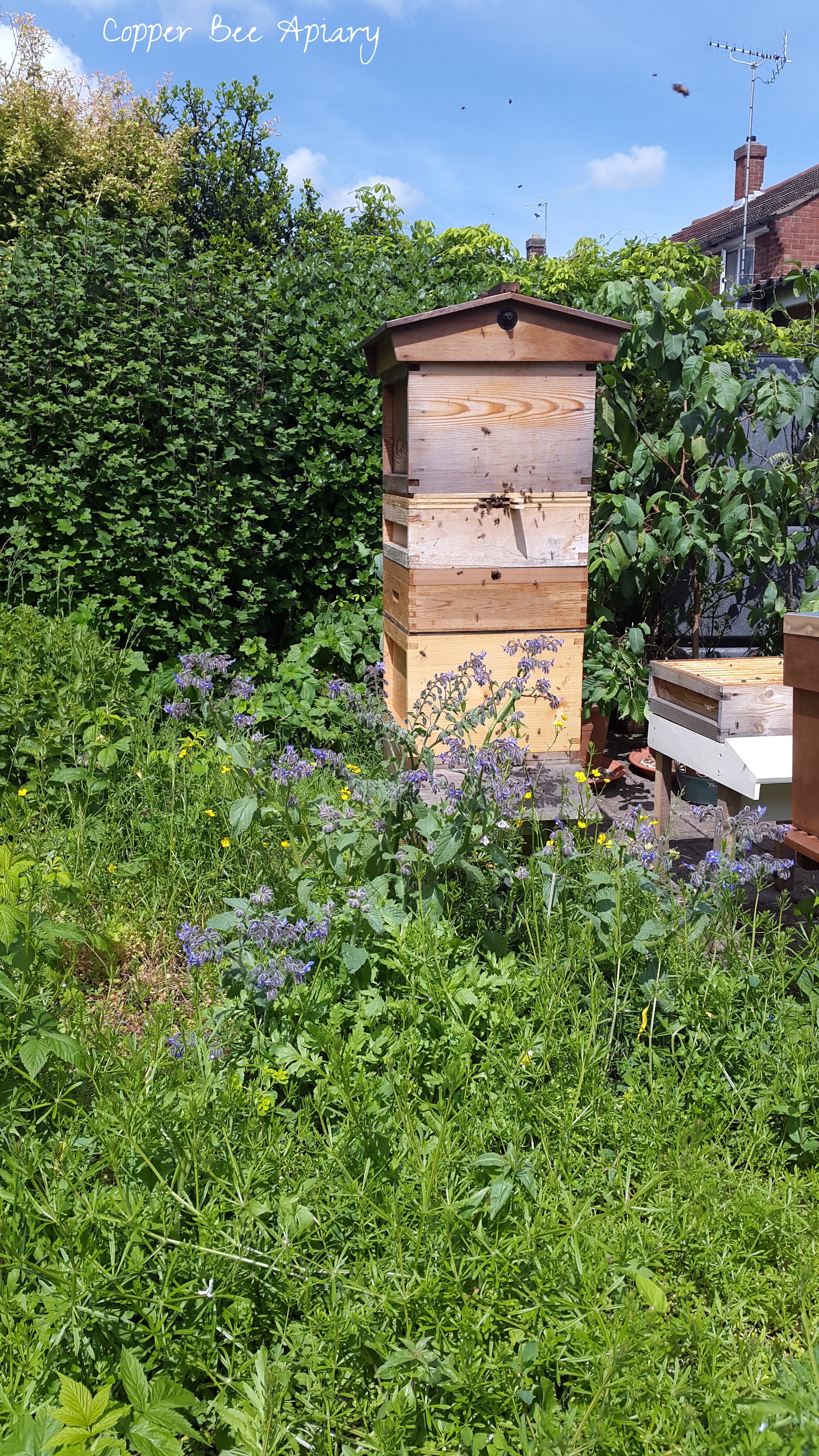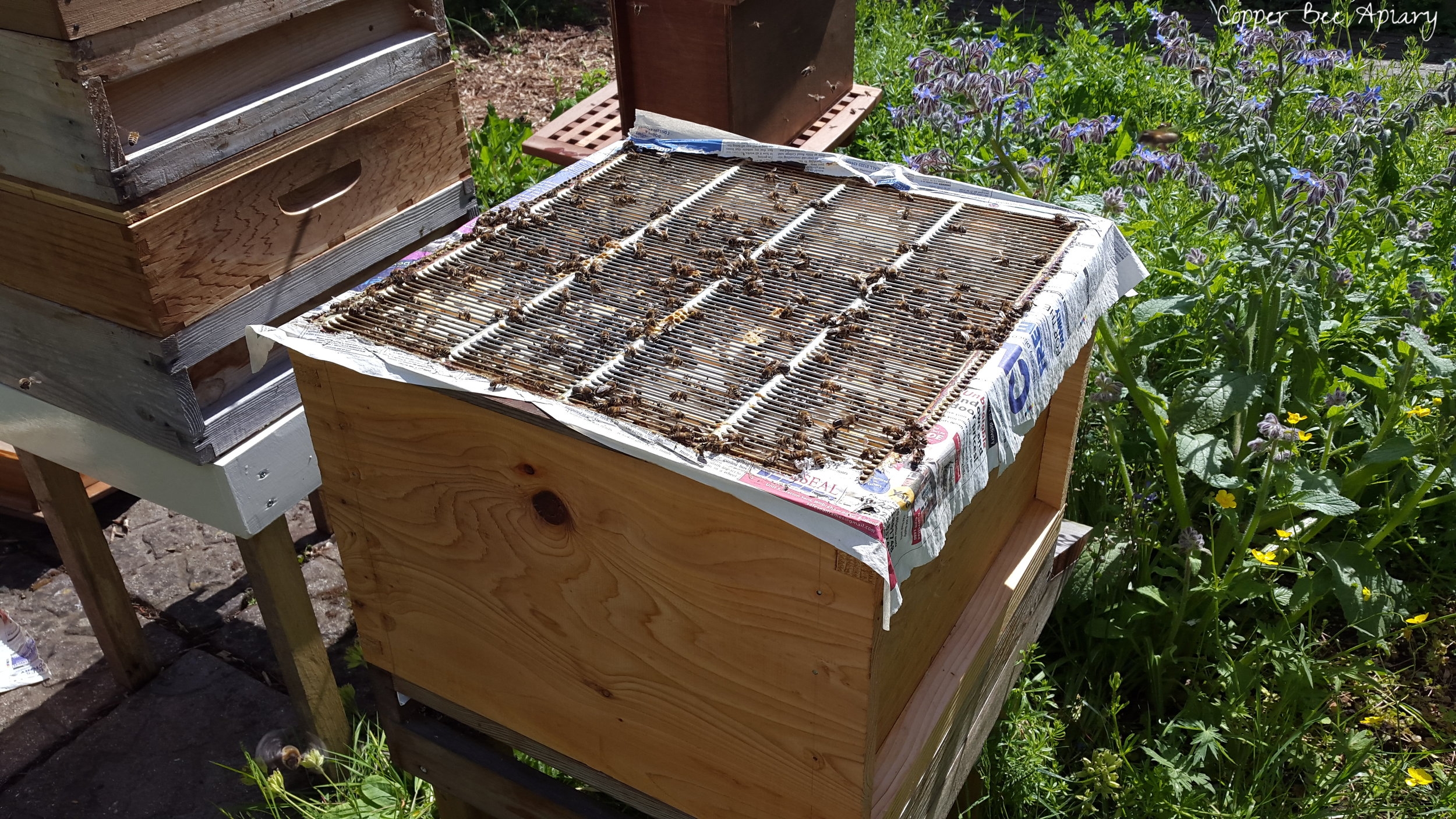Disc Hive goes to the Farm
The Disc Hive bees have been having big adventures this year.
Headed by Queen Honey, they surged into growth this spring, and I only just split them in time to stop a mid-April swarm. After that, I split the top colony again, by transferring Queen Honey and half the brood into a nucleus box, leaving the remainder to raise a new queen. But despite my interventions, they swarmed. I think I left too many queen cells in the lower colony, so they produced more than one new queen, and had enough flying bees for one of those queens to leave with a swarm.
Sadly, despite marching theatrically into a new hive as you can see in the Gallery video, that swarm has ended up being queenless. Perhaps the swarm queen and her swarm parted ways. Perhaps she didn't mate successfully. Perhaps she was injured during my inexpert swarm collecting. Whatever, the swarm are unhappily living out the rest of their days as laying workers.
Meanwhile, back in the Disc Hive, Queen Irene has ascended to the throne. I discovered her presence by surprise, when I was preparing to re-introduce Queen Honey to that hive after the Bee Inspector had reported it to be queenless. Queen Irene is the daughter of Queen Honey, and probably a younger sister or half-sister of the queen who left with the swarm. Although perhaps there's an outside chance she actually is the queen who left with the swarm, who somehow sneaked back home again!
Anyway, I do hope Queen Irene is a brave but gentle queen, because at this tender young age she has already gone on a big adventure. Yesterday, in the early morning, we took the Disc Hive to a new home in the Cambridgeshire countryside. A local farmer has welcomed the bees on to his land, where hopefully they will make themselves useful pollinating field beans. I'm not sure yet whether I worry more about them now they are there (are they ok? has the hive been knocked over by wildebeest? when can I visit?) or when they were here (are they causing a nuisance? is there a bee caught in my hair again?). But, at any rate, it's a big move - we now have apiary number two!






